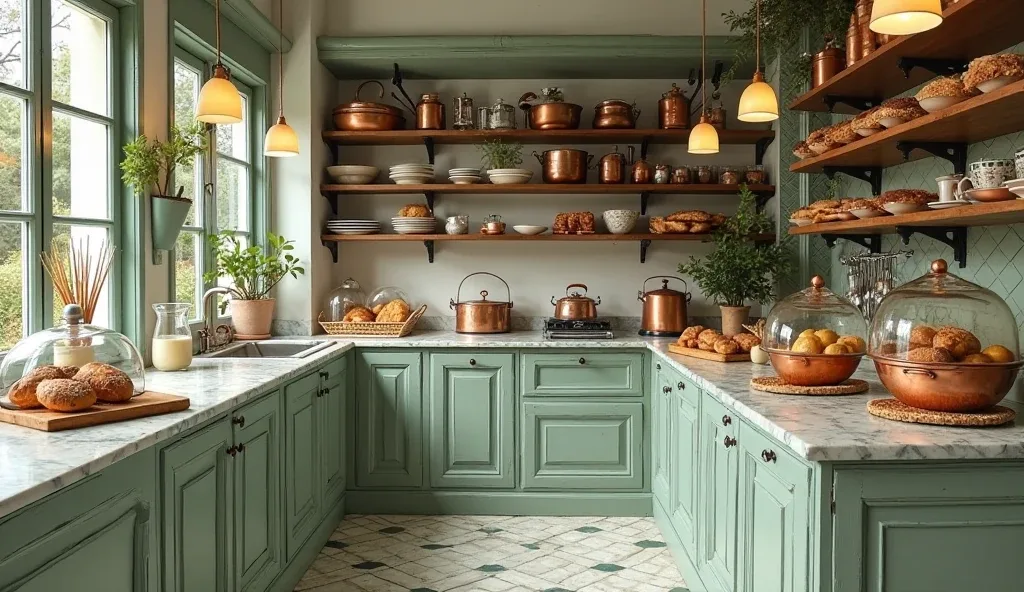Walk into most kitchens and you’ll see the same safe color story: white cabinets, maybe some gray if the owners were feeling adventurous, and that persistent beige backsplash that somehow made its way into every house built in the last decade. Everything’s neutral, everything’s safe, and everything feels like it could belong to anyone.
Meanwhile, you’re scrolling through design inspiration, bookmarking gorgeous kitchens that have actual personality, and wondering why your space feels more like a sterile lab than the warm heart of your home. You want something that feels fresh and sophisticated but not trendy in that “this will look dated in three years” way.
Enter sage green—the color that’s sophisticated enough for the most elegant homes but grounded enough to feel livable and real. It’s not screaming for attention like some bold colors, but it’s definitely not hiding in the background like another boring neutral.
Whether you’re planning a complete kitchen renovation or looking for ways to add personality to your existing space, sage green offers the perfect balance of character and versatility. Ready to discover why this color is showing up in the most beautiful kitchens everywhere and how to make it work in your own space?
Understand What Makes Sage Green Actually Work
Before diving into all the beautiful applications, let’s talk about why sage green succeeds where other colorful kitchen choices often fail. This isn’t just about following a trend—it’s about understanding color psychology and practical design principles.
It’s Nature’s Perfect Neutral – Sage green works because it’s essentially a sophisticated gray-green that reads as calming rather than stimulating. Your kitchen needs to function at all hours and energy levels, and sage green adapts rather than demands attention.
Light Flexibility is Everything – Unlike colors that look completely different under various lighting conditions, sage green maintains its character whether you’re cooking by morning sunlight or evening pendant lights. This consistency makes it actually livable long-term.
It Ages Gracefully – While trendy colors can feel dated quickly, sage green has enough depth and subtlety to evolve with changing styles and personal preferences over time.
Design Like You Understand Color Theory
The most successful sage green kitchens don’t just throw the color around randomly—they use it strategically to create specific moods and solve design challenges.
Balance is Your Best Friend – Sage green needs breathing room to feel sophisticated rather than overwhelming. It works best when balanced with neutrals that let it be the supporting actor rather than demanding the entire spotlight.
Consider Your Natural Light – North-facing kitchens benefit from sage green’s warmth, while south-facing spaces can handle deeper, more saturated versions. Your specific lighting conditions should inform your shade selection.
Think About Longevity – Choose applications that can evolve with your style. Sage green cabinets are a bigger commitment than sage green accessories, so plan accordingly based on your renovation timeline and budget.
Layer Your Green Strategically
This is where amateur color use becomes professional-looking design—understanding how to introduce sage green in ways that feel intentional rather than accidental.
Start With One Statement Element – Whether it’s your island, lower cabinets, or backsplash, choose one primary application and build around it rather than scattering green randomly throughout the space.
Create Visual Weight Distribution – Sage green works best when it anchors your design rather than floating in the middle of competing elements. Think about how the color grounds your space.
Coordinate With Your Architecture – Your sage green elements should enhance your kitchen’s natural proportions and architectural features rather than fighting against them.
13 Sage Green Kitchen Design Ideas
Idea 1: Classic Shaker Cabinets
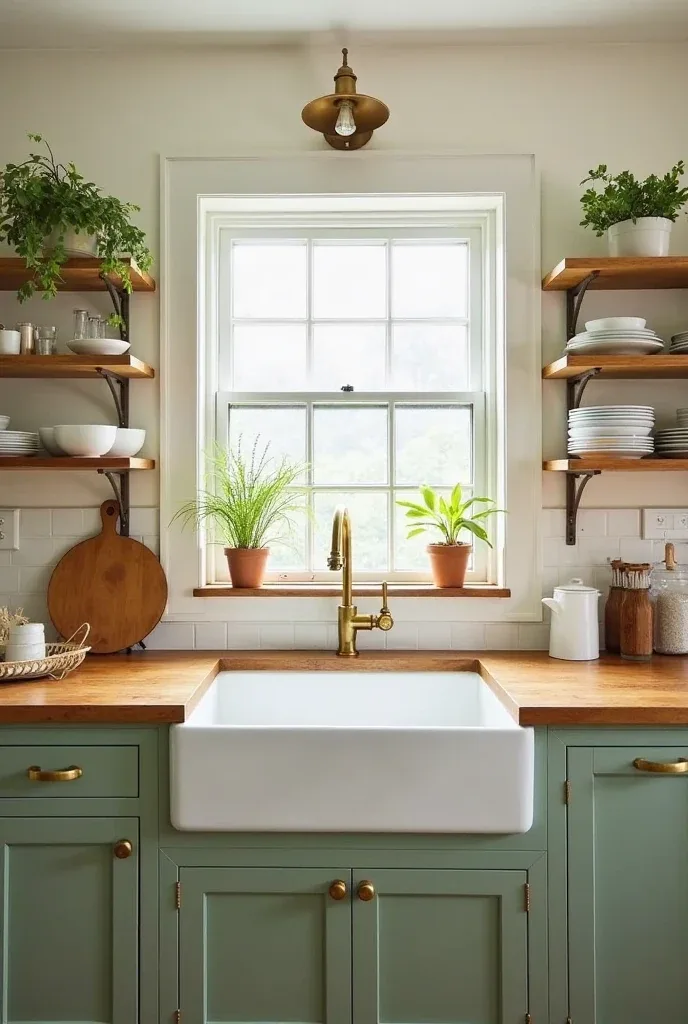
Install sage green shaker-style lower cabinets paired with white uppers to create a sophisticated two-tone design that feels both traditional and contemporary. The clean lines of shaker doors let the color be the star while maintaining timeless appeal.
This approach gives you the impact of colored cabinets without overwhelming your space. The sage green grounds the kitchen while white keeps it feeling bright and spacious.
Coordinate with warm brass hardware and natural materials like marble countertops to create a palette that feels fresh but not trendy. This combination photographs beautifully and lives even better.
Idea 2: Two-Tone Strategy
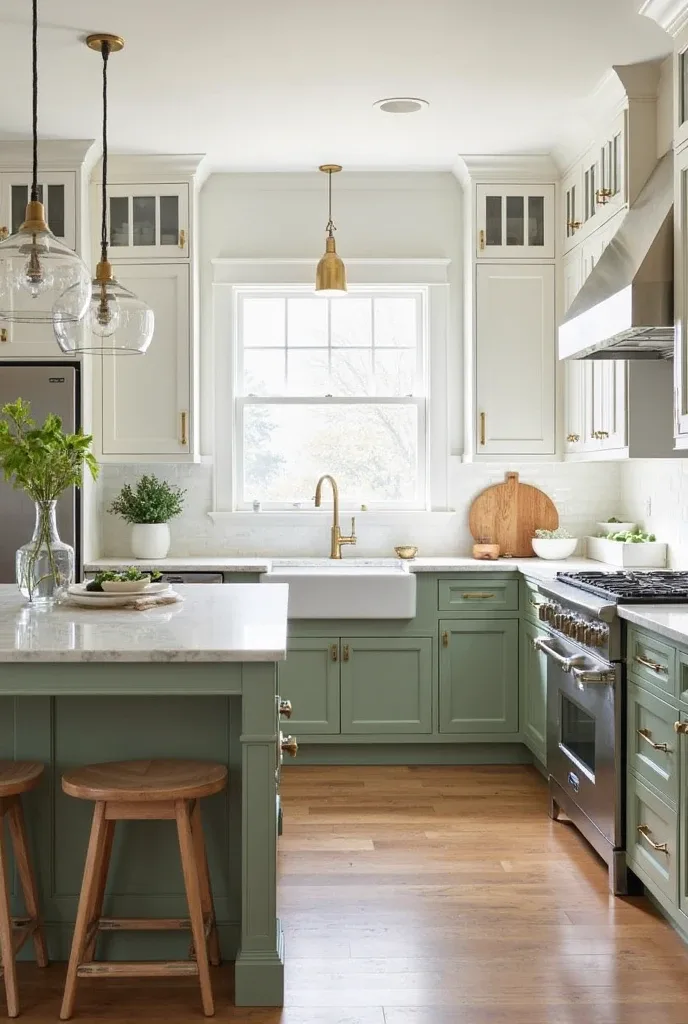
Design your kitchen with sage green lower cabinets and cream or warm white upper cabinets for a sophisticated contrast that adds depth without feeling busy or overwhelming.
The key is choosing the right proportion—typically, the darker color works better on lower cabinets where it grounds the space, while lighter uppers keep the room feeling open and airy.
Add natural wood countertops and brass hardware to warm up the palette and create a cohesive look that feels intentional rather than accidentally mismatched.
Idea 3: Statement Island
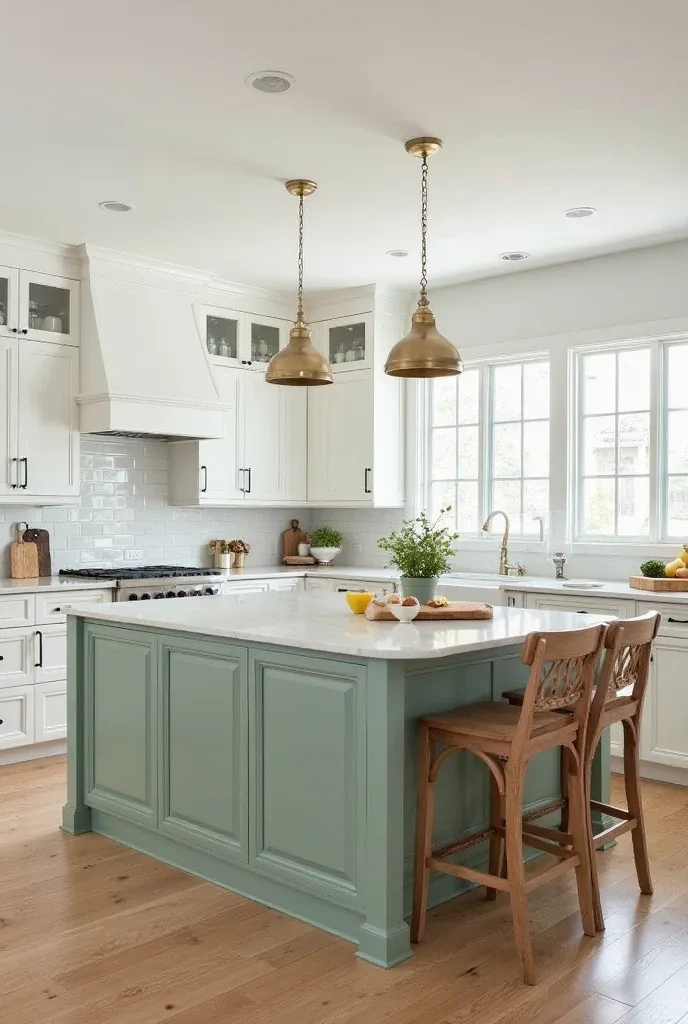
Create drama with a sage green kitchen island surrounded by white perimeter cabinets. This approach lets you experiment with color without committing to it throughout the entire space.
The island becomes your kitchen’s jewelry—a beautiful focal point that draws the eye and creates visual interest while maintaining functionality for daily meal prep and casual dining.
Choose complementary bar stools and pendant lighting that enhance rather than compete with your sage green statement piece.
Idea 4: Painted Brick
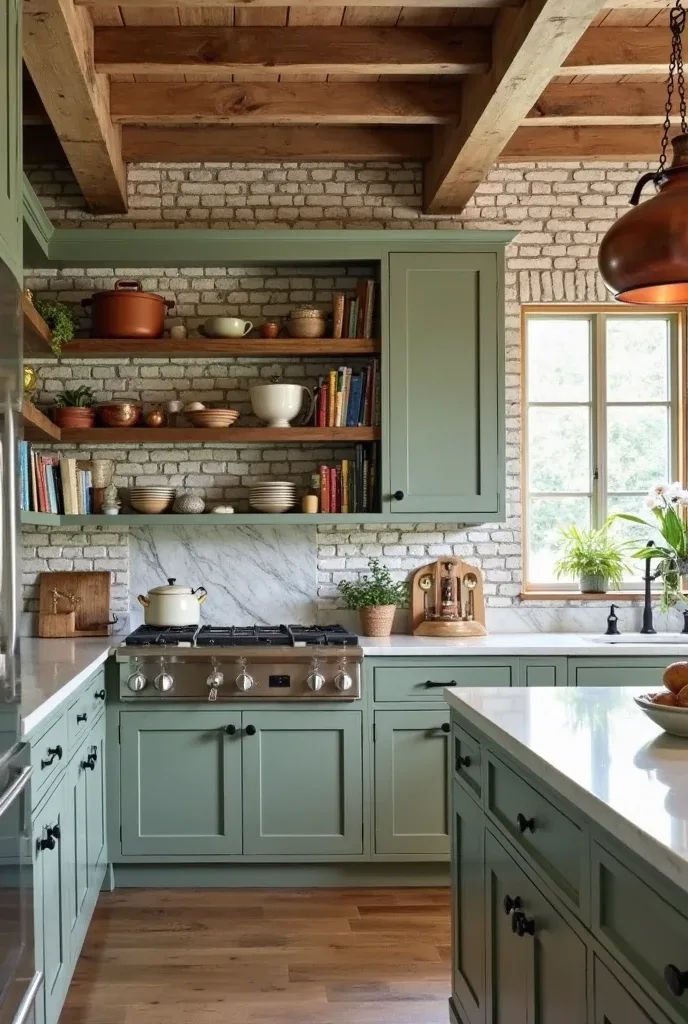
Transform an exposed brick wall or backsplash with sage green paint that maintains the texture while creating a cohesive color story throughout your kitchen design.
Painted brick offers the best of both worlds—the interesting texture and character of brick with the color coordination you need for a polished, intentional look.
Balance the textural wall with smooth countertops and sleek hardware to create contrast that keeps the space feeling sophisticated rather than rustic or overwhelming.
Idea 5: Luxurious Gold Accents
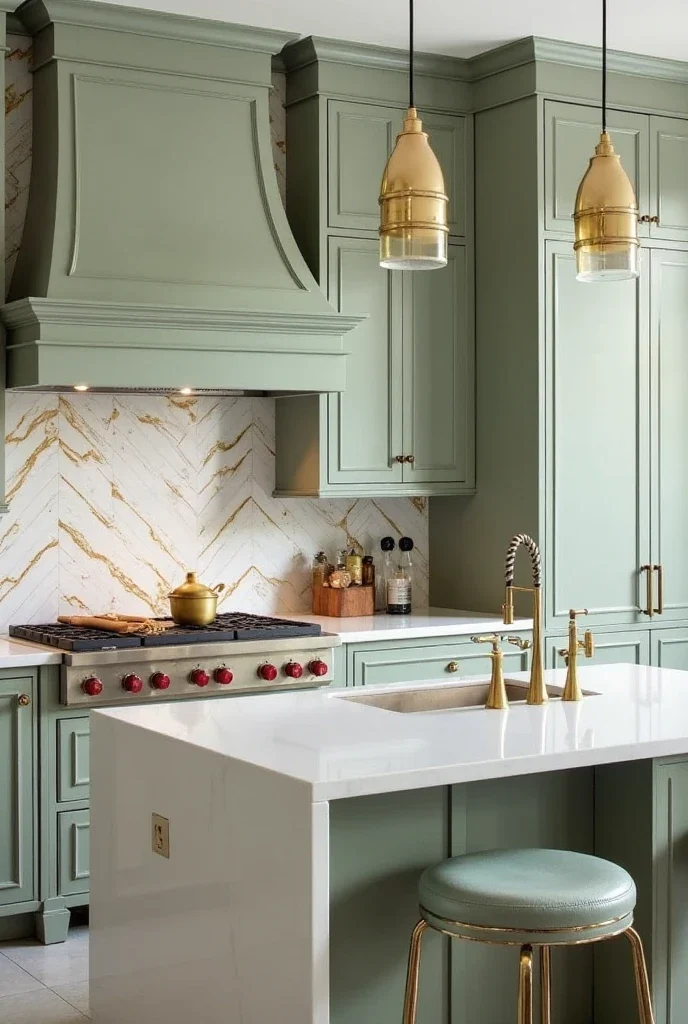
Combine sage green cabinets with warm brass or gold hardware, lighting, and fixtures for a palette that feels both sophisticated and welcoming rather than cold or institutional.
The warm metallics complement sage green’s natural undertones while adding luxury details that make everyday kitchen tasks feel more special and intentional.
Choose gold-veined marble or brass pendant lights to tie the metallic elements together throughout the space for maximum cohesion and impact.
Idea 6: Natural Wood Integration

Pair sage green cabinets with natural wood countertops, shelving, or ceiling beams to create an organic palette that feels grounded in nature rather than artificially trendy.
The combination of sage green and natural wood creates warmth without sacrificing sophistication, making your kitchen feel like a natural extension of outdoor spaces.
Choose wood species with enough character to hold their own against the sage green while maintaining overall harmony throughout your design.
Idea 7: Accent Doors
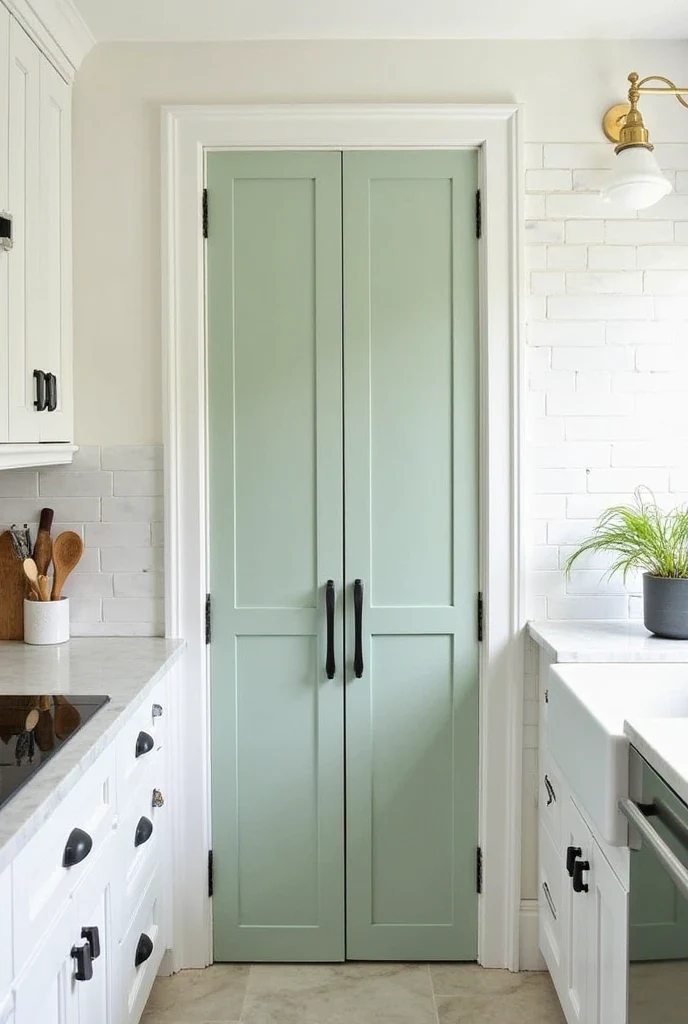
Use sage green paint on pantry doors, butler’s pantry cabinets, or a single cabinet wall to introduce color without overwhelming your existing white or neutral kitchen.
This approach allows you to test living with sage green while adding visual interest to your space. It’s also budget-friendly if you’re not ready for a complete renovation.
Choose doors or cabinets that are architecturally significant enough to handle being a different color—random cabinet doors painted differently can look unfinished rather than intentional.
Idea 8: Vintage-Style
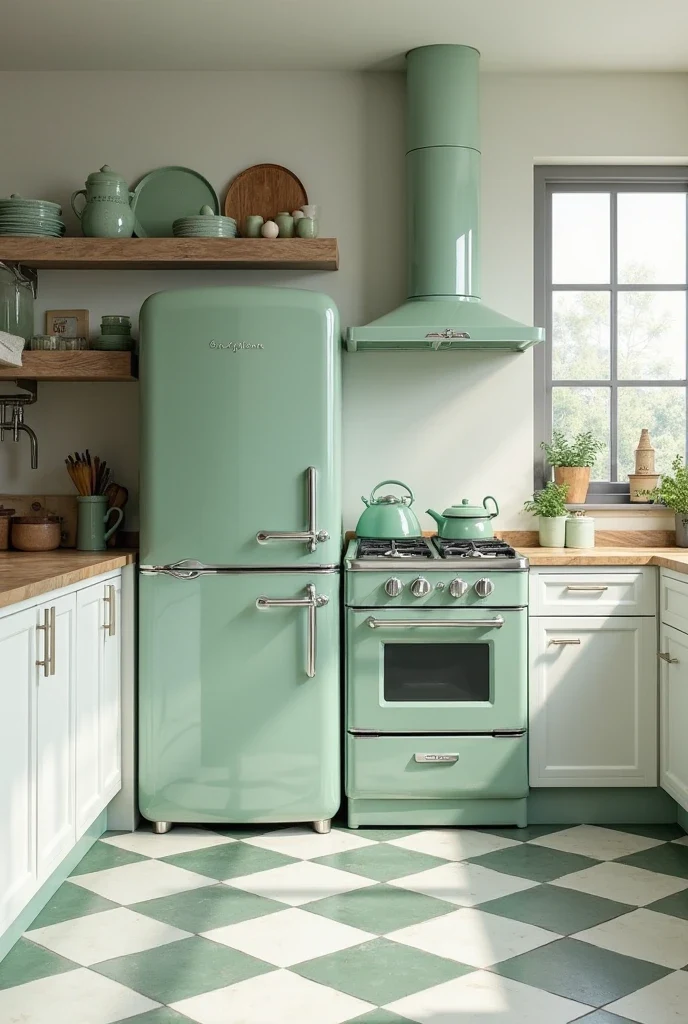
Incorporate sage green appliances like refrigerators, ranges, or small appliances that bring color and personality to an otherwise neutral kitchen design.
Modern appliance manufacturers offer sophisticated sage green options that feel vintage-inspired without sacrificing contemporary functionality and efficiency.
Balance colored appliances with neutral cabinetry and countertops, letting the appliances provide personality while maintaining overall sophistication throughout the space.
Idea 9: Subway Tile Backsplash

Install sage green subway tiles in classic or herringbone patterns to add color and visual interest without overwhelming your kitchen design.
Sage green tile provides the perfect amount of color—enough to create interest but subtle enough to work with various cabinet colors and countertop materials.
Extend the tile to the ceiling or use it as an accent strip within white tile for different levels of impact based on your comfort with color.
Also Read: 13 Kitchen Curtain Ideas Above Sink That Transform Your Most Hardworking Space
Idea 10: Mixed Materials
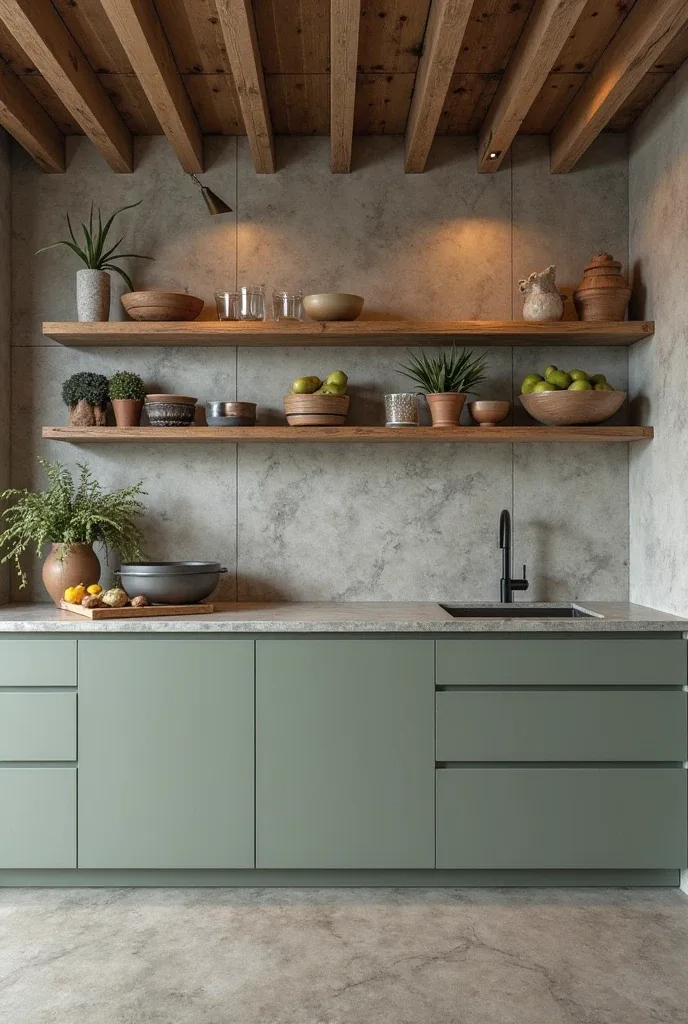
Combine sage green painted elements with natural materials like concrete countertops, stone backsplashes, or wood shelving for an organic modern aesthetic.
The contrast between sage green’s softness and industrial materials like concrete creates visual tension that keeps your kitchen feeling contemporary and interesting.
Add matte black hardware and fixtures to ground the palette and create definition between the various materials and colors.
Idea 11: Marble Pairing
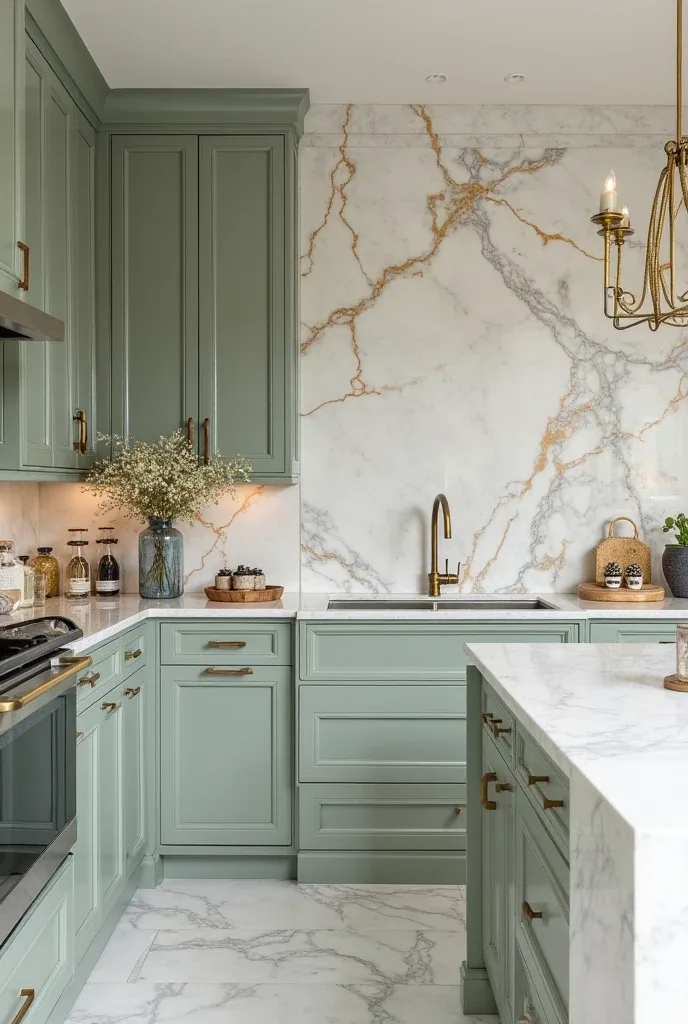
Combine sage green cabinets with dramatic white marble countertops and backsplashes featuring prominent veining for a sophisticated palette that feels both calming and luxurious.
The natural veining in marble often contains gray-green tones that complement sage beautifully, creating a cohesive color story that feels intentional rather than coincidental.
Choose brass hardware that picks up any gold tones in your marble while warming up the overall palette for maximum sophistication.
Idea 12: European Café Style
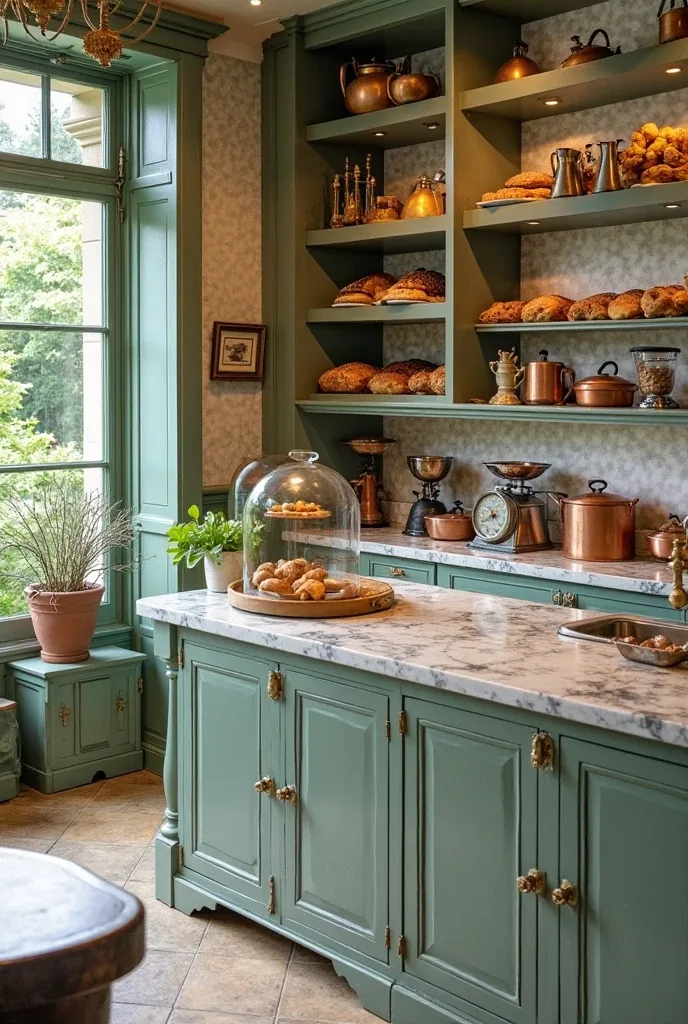
Design your kitchen with sage green elements inspired by European bistros—painted cabinets, copper pots, marble surfaces, and open shelving displaying beautiful dishes and ingredients.
This approach creates a kitchen that feels like a destination rather than just a functional space, making cooking and entertaining more enjoyable and atmospheric.
Include authentic details like vintage scales, glass cloches, and copper cookware that enhance the café aesthetic while remaining functional for daily use.
Idea 13: Built-In Banquette
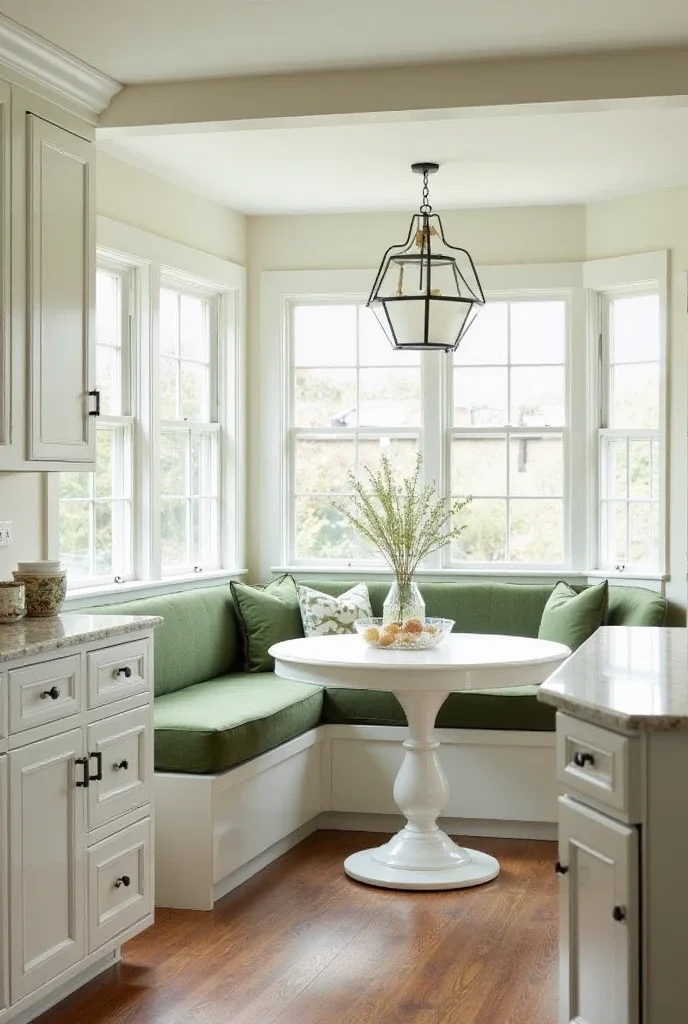
Add a sage green upholstered banquette or breakfast nook seating that brings color and comfort to your kitchen dining area while maintaining the sophisticated color palette.
Upholstered elements in sage green add softness and warmth to kitchens dominated by hard surfaces, creating inviting spaces where people want to linger.
Choose durable, easy-to-clean fabrics that can handle kitchen environments while maintaining their appearance and color over time.
Final Thoughts
Creating a sage green kitchen that works long-term isn’t about following every trend or painting everything green and hoping for the best. It’s about understanding how this versatile color can enhance your kitchen’s functionality and personality while creating a space that feels fresh without being fleeting.
The most successful sage green kitchens use the color strategically to solve design challenges—adding warmth to cool spaces, creating focal points in open layouts, or bringing personality to neutral palettes. When sage green serves a purpose beyond just looking pretty, it becomes an integral part of your kitchen’s success.
Remember, your kitchen needs to work for your daily life first and look beautiful second. The right sage green elements should enhance both your cooking experience and your space’s visual appeal, creating a kitchen that’s both practical and inspiring for years to come.

